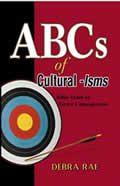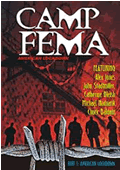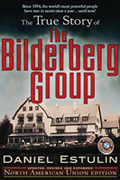MONTH OF THE MILITARY CHILD
By
Debra Rae
April 14, 2012
NewsWithViews.com
In her 1991 book, Military Brats: Legacies of Childhood inside the Fortress, Mary Edwards Wertsch isolated America’s community of military children as an indigenous subculture with its own customs, rites of passage, forms of communication, and folkways. In doing so, she launched a movement for cultural identity through which adult military “children” began discovering the “secret family” they didn’t know they had.[1]
Thereafter, in 2005, filmmaker Donna Musil released the first ever documentary made exclusively about military children. In it, Musil draws on many studies and interviews with counselors, psychologists, and military brats themselves. Her award-winning documentary, Brats: Our Journey Home, fingers this distinct American subculture, "an invisible tribe" comprising five percent of the population. Former military child, author Pat Conroy ends the film with a provocative observation: “We spent our entire childhoods in the service of our country, and no one even knew we were there.”[2]
The Defense Department addresses this conundrum by earmarking April as the “Month of the Military Child.” Given our nation’s three extended military engagements (two in Iraq and one in Afghanistan), now is a great time to examine America’s distinctive subculture of the military child—and to appreciate unique challenges faced by America’s military families at home and abroad. We owe them that much.[3]
Linguistic Reclamation of “Brat”
Wherever organized warfare exists, military spouses and their children follow armies. The so-called “little traveller” is found in literature dating back to the early nineteenth century. Historically, military children were known as “camp followers.” Though origin of the term, "military brat," is unknown, some evidence suggests that, originally, the label stood for "British Regiment Attached Traveler.” American “military brats” date back to birth of the United States.[4]
In her research, sociologist Karen Williams used the term reluctantly in order to "follow the wishes of participants.” You see, while non-military personnel find the term "brat" impudent, it has been reclaimed linguistically as a positive term of affection within the ranks of the military. Member of the United States Senate Committee on Armed Services, Senator Ben Nelson explains, "When the word 'brat' is used to describe someone, it is not meant as a compliment; but … "military brat" [is] … a term of endearment." It speaks respectfully of one who is a world traveller and, hence, a global citizen, graced with spunk and a spirit of adaptability.[5]
Third Culture Kids
In the 1970s, sociologist Ruth Hill Useem coined the term "third culture kid" (TCK) for the child of a soldier. TCKs integrate aspects of one’s birth culture (the first culture) with a new and different culture to which he is exposed (the second culture). When merged, the two create a unique "third culture." Studies show that third culture kids move frequently, often hundreds or thousands of miles away from what’s familiar.[6]
Sociologist Morten Ender conducted the largest scientific study to date on career military brats exclusively, specifically those who from birth through high school had at least one parent in military service. Of 600 brats studied, ninety-seven percent had lived in at least one foreign country (sixty-three percent in two; thirty-one percent in three), spending an average of seven years abroad. Brats averaged eight moves before graduating from high school. Over eighty percent were bilingual; and fourteen percent spoke three or more languages.[7]
Education Turntable
Unlike the public school system, a typical military school can experience up to fifty percent turnover every year; and base schools reach one hundred percent turnover in only two years. Recent studies show that mobility during the school year may be less traumatic than summer time moves. However, when required to move mid-year, the student is forced to join classes that have already begun. Social groups are even more difficult to break into, and previously enjoyed activities may be open to him no longer.
Even more, continuity in core curricula is interrupted, resulting in instructional gaps. A student who excelled at one school may feel inadequate upon entering a larger, more academically rigorous one; and, adding to the stress, previously completed coursework may fail to fulfill graduation requirements.[8]
Home and Family
The modern military has a larger proportion of married military members. For the “travelling child,” home is where the family is. Although a significant percentage of military brats report difficulty forming strong relations with people or places, they typically experience tight bonds with siblings; and they often forge strong connections with (or, in some cases, aversion to) their military community. Military bases represent tiny, self-contained, government-subsidized towns defined by conformity. Even the areas immediately surrounding bases are highly influenced by the military culture.
Eighty percent of Cold War era military brats characterize their fathers as "authoritarian." Military households frown on non-conforming behaviors and dissent. Consequences for said misbehaviors are generally greater for brats than for civilian counterparts, perhaps because the brat's behavior likely becomes part of the military member's record. Patterns of misbehavior can undermine a parent’s promotion or preferred duty assignment.
As a general rule, military brats are better behaved than their civilian counterparts. It’s typical for U.S. military families to display "duty rosters" on the refrigerator and to enforce parent-conducted room inspections. Tardiness and insubordination are unacceptable. Traditionally, military children address adults with “sir” or “ma'am," and they are expected to answer the family phone with extreme formality.
Because brats are pressured to conform to military culture, they sometimes are perceived as being more mature than peers. Paradoxically, having struggled with perfectionism and performance-control issues, a majority of military brats describe themselves as being successful.[9]
• “Down” Side of Family Militarization
On the other hand, under the intense stress of always being on their best behavior, some military brats develop psychological problems; others rebel against military regimentation well beyond what is normally considered acceptable. Rather than develop problem-solving skills, there is a temptation simply to leave a problem behind without resolving it. If a brat does not like somebody, he knows that in short order the problem will likely disappear.
Among a minority of military brats, there is a higher than average incidence of Avoidant Personality Disorder and Separation Anxiety Disorder. Some adult military brats fail at developing and maintaining deep, lasting relationships. One major study shows that thirty-two percent of military brats feel as if they are only spectators to U.S. life, and another forty-eight percent feel central to no group whatsoever. A significant minority exhibits symptoms of Post Traumatic Stress Disorder, Avoidant Personality Disorder, and the like.
Long hours, frequent disruptions in lifestyles, and high levels of stress, sometimes war-related, can lead to abusive behaviors and alcoholism within military homes. Both are common themes in Wertsch's book and in Pat Conroy's The Great Santini.[10] However, because military culture offers more accessible help—i.e., health care, community, and family support programs—some report abusive behaviors (inclusive of alcoholism) are less prevalent among military families.
• “Up” Side of Family Militarization
Anecdotal evidence compiled by Samuel Britten suggests that many children from military families are raised with a strong sense of patriotism. After all, at the close of each workday, the bugle call To the Color resounds on military installations while the flag is lowered. In my day, all activities ceased, even driving, while uniformed personnel saluted and all others placed their hand over their hearts. Lifeguards emptied pools of swimmers for all to stand at attention. Prior to movies at base theaters, patrons and staff alike stood for the National Anthem followed by God Bless the USA or its ilk.
Until recently, students at Department of Defense Dependents Schools (DoDDS) overseas and Department of Defense Domestic Dependent Elementary and Secondary Schools (DDESS) within the United States recited the Pledge of Allegiance every morning. Patriotic and militaristic songs were sung not only in schools, but also during military chapel services.[11]
Duty, Honor, Country
In the 1990s, the army officially adopted what have come to be known as "The Seven Army Values," summarized with the acronym "LDRSHIP"—namely, loyalty, duty, respect, selfless service, honor, integrity, and personal courage. Indeed, the motto "duty, honor, country" is the standard of the U.S. military. To some degree, brats are treated like soldiers, subjected to a warrior code of honor and service.
Training and preparing for war involve significant dangers, as do other military duties. Consequently, even when there is no active war, many military brats live with the reality of risk to one or both parents. A military brat understands and accepts that, in the line of duty, the service person within his family may be killed or maimed. Accordingly, a positive backronym (acronym-style derivation invented for existing words) identifies brats as "Brave, Resilient, Adaptable, and Trustworthy."[12]
Marine General Peter Pace, the Chairman of the Joint Chief of Staff adds, "There's no way, in my mind, that you can be successful in the military and have a family unless that family does, in fact, appreciate your service to the country. ... [Brats are] patriots and role models for us all."[13]
Lifestyle Quirks
Military brats have been studied extensively from the perspective of social psychology and as a distinct and unique American subculture, but less so in terms of long-term impact. Unlike civilian counterparts, military brats endure absence of a parent due to deployment, threat of parental loss or injury in war, stresses associated with the psychological aftermath of war, and militarization of the family unit. Studies show that growing up within the military culture can have overall, long-lasting effects—some positive, some not.
Due to a transient lifestyle, military brats routinely forfeit friendship ties. However, in being exposed to a wide range of regional cultural differences, not to mention foreign cultures and languages while living overseas, brats tend to cultivate resilience, exceptional social skills, proficiency in foreign languages, and a high level of multicultural and/or international awareness.
"Suddenly military" reservist and National Guard families face isolation from other military-family peers, coupled with isolation within hometown communities. Operation: Military Kids is a program designed to help "suddenly military" children understand the military culture; and Our Military Kids provides monetary grants for National Guard and Reserve children, whose parents sometimes incur a lapse in income upon being called to active duty.[14]
Adult Brats
Remarkably, brats divorce at a lower rate. More than two-thirds of brats over forty years of age remain married to their original spouses. This applies even though military members can be deployed without their families for days, months, or even years at a time. In such cases, the children experience similar emotions as children of divorced parents.[15]
Having lived around the world, military brats can have a breadth of experiences unmatched by most teenagers. Sociologist Henry Watanabe showed that growing up in a mobile community offers opportunities generally unavailable to geographically stable families. Not only do they boast lower delinquency rates, military brats also achieve higher scores on standardized tests and rate higher median IQ scores than civilian counterparts. Furthermore, they graduate from college and earn advanced degrees at higher rates than the non-military population.[16]
Author of a well-known study on military brats, Mary Edwards Wertsch identified a curious pattern. Statistically, brats show a very strong affinity for careers that entail service to others—e.g., military service, teaching, counseling, police, nursing and foreign-service work. Adult brats who do not choose military service tend instead to favor creative and/or artistic professions that offer more independence. Hence, many elect to be self-employed.[17]
Recent studies show that, although brats move an average of every three years, they do not grow accustomed to moving. An adult military brat can never return and find old friends, neighbors, or even former teachers on military bases where they grew up. Feeling outside in relation to civilian culture is common for a majority of military brats. Studies show further that many adult military brats refuse any and all pressures from spouses or employers to move ever again. Still others report having “the itch”—namely, difficulty settling down in one geographic location.[18]
Military Classism and Racism
In recent years, military classism is rare among military brats. In fact, "social" rank discrimination among families is typically frowned upon. Most officer- and enlisted- clubs have merged into "All Hands" Clubs, and military children play together without recognition of parental rank.[19]
Decades before the civil rights movement, President Truman signed Executive Order 9981, thereby integrating the military and mandating equality of treatment and opportunity. The EO made it illegal for military personnel to make racist remarks. Fifteen years later, Secretary of Defense Robert McNamara issued Department of Defense Directive 5120.36 that opposed discriminatory practices affecting men and their dependents.[20]
Brats today aren't solely “non-racist”; they are commonly “anti-racist." According to the largest study conducted on nearly 700 third culture kids, eighty percent claim they can relate to anyone, regardless of race, ethnicity, religion, or nationality. A recent study, Military Brats: Issues and Associations in Adulthood, found that military brats can feel a "sense of euphoria" when connected to others who share this sense of transcendence.[21]
Conclusion
Limited studies on children who have lost a parent show that ten to fifteen percent experience depression, and a few develop childhood traumatic grief (inability to recall any positive memories of the deceased parent). Based on his experience, military psychiatrist Stephen Cozza speculates that wartime death of a parent is even more traumatic and difficult to deal with than typical causes.[22]
The U.S. Defense Department reports that there are currently two million American children and teenagers who have had at least one parent deployed in a war zone, and parents of over nine hundred thousand have been deployed multiple times. To complicate matters, both parents in approximately fifty thousand military families serve in the armed forces.[23]
| Subscribe to the NewsWithViews Daily News Alerts! |
With the advent of the Internet, family members can communicate with servicemen and women in combat zones. However, given CNN and Fox News, military families know that servicemen have died before official word reaches the family. Not surprisingly, a Pentagon study released in June 2009 shows that children of combat troops demonstrate increased fear, anxiety, and behavioral problems; and one-third of them experience academic problems. For a year after the parent returns, some thirty percent of the military children exhibit “clinical levels of anxiety."[24]
Armed with awareness of their unique subculture, we do well to honor America’s approximately fifteen million military brats. Accordingly, at the Center for Changing Worldviews, we’ve implemented Operation Heartlift, which connects local communities with troops and their families. Our purpose is to to show in tangible ways that we appreciate them and care about them. Indeed, no military brat should feel as though he spent his entire childhood in the service of our country with no one even knowing he was there.[25]
� 2012 Debra Rae - All Rights Reserved
Footnotes:
1.
Mary Edwards Wertsch. Military Brats: Legacies of Childhood Inside
the Fortress. Saint Louis, Missouri: Brightwell
Publishing, 2006, p. 350.
2.
BRATS:
Our journey home.
3.
Rudi Williams. “Military Brats are A Special Breed.” Washington,
D.C.: American Forces Press Service (US Department of Defense Publication),
2001.
4.
Grace Clifton. Making the Case for the BRAT (British Regiment Attached
Traveller).” British Education Research Journal, Volume
1, No 3: June 2004, p 458.
5.
Senator Ben Nelson. “April
is a Very Special Month for Children in Military Families,”
2005. Retrieved on March 18, 2012.
6.
Ruth Useem, et al. “Third
Culture Kids: Focus of Major Study.” International Schools
Services. Retrieved on, 2006.
7.
Morton Ender. "Military Brats and Other Global Nomads." Westport,
Connecticut: Greenwood Publishing Group, March 2002.
8.
"Despite the commonly held belief that summer moves are best for
children, teens who moved during summer vacation seemed to experience
particular difficulties… Their problem was that, with school out
of session, it was very difficult to identify potential friends and
begin to form relationships." (Tyler, 2002).
9.
Morton Ender. "Military Brats and Other Global Nomads." Westport,
Connecticut: Greenwood Publishing Group, March 2002.
10.
The
great Santini.
11.
"We all stopped, no matter what we were doing. And no matter where
we were, no matter what foxhole we were hiding in, ... we stopped. Retreat
would blare out from the loudspeakers all over the base. We could never
see the flag; it was miles away. But we knew where it was, and like
facing Mecca, everyone turned around, and put their hand over their
heart, and stood there until the music stopped.... There was never even
a comment about it, no matter what was going on. It just happened everyday."
(Truscott, 1989)
"Whenever
and wherever the National Anthem, To the Colors, or Hail to the Chief
is played outdoors, at the first note, all dismounted personnel in uniform
and not in formation, within saluting distance of the flag, face the
flag, or the music if the flag is not in view, salute, and maintain
the salute until the last note of the music is sounded... Vehicles in
motion are brought to a halt. Persons riding in a passenger car or on
a motorcycle dismount and salute." (Bonn, 2005)
12.
Grace Clifton. "Making the case for the BRAT (British Regiment
Attached Traveller)" in British Education Research Journal,
Vol 1, No 3, June 2004, p. 458.
13.
Marine General Peter Pace. “Sacrifices of Military Children.”
American Forces Press, December 3, 2006.
14.
Bob Roehr. “Families of Deployed Reserve, National Guard Soldiers
Face Challenges.” Denver, Colorado: Medscape Today, Medscape Medical
News, November 16, 2010.
15.
Your
children and separation.
16.
Admiral Dennis Blair, Commander in Chief, U.S. Pacific Command. “The
Military Culture as an Exemplar of American Qualities.” San Diego,
California: Supporting the Military Child Annual Conference, Westin
Horton Plaza Hotel, July 19, 2000. Retrieved December 3, 2006.
17.
Mary Edwards Wertsch. Military Brats: Legacies of Childhood Inside
the Fortress. Saint Louis, Missouri: Brightwell
Publishing, 2006.
18.
Kathleen Finn Jordan. "Identity Formation and the Adult Third Culture
Kid." Westport, Connecticut: Praeger, 2002.
19.
"Protocol is not intended to promote snobbery; it is a courtesy
designed to recognize official status and give respect to those who,
by their achievements, time in service, and experience, deserve it.
And the exercise of that most certainly extends to spouses." (Cline,
1995)
20.
Heather Antecol and Deborah Cobb-Clark, “Racial and Ethnic Harassment
in Local Communities.” Unpublished working paper: October 4, 2005,
p 8. Retrieved on January 1, 2007.
21.
Mary Edwards Wertsch. Military Brats: Legacies of Childhood Inside
the Fortress (first hardcover edition). Saint Louis, Missouri:
Harmony, April 23, 1991.
22.
Stephen Cozza. "Military Families and Children During Operation
Iraqi Freedom." Psychiatric Quarterly, Vol 76, No 4, Winter
2005, pp. 371–378.
23.
Elaine Wilson. "Military
Teens Cope With Wartime Challenges." Fort Campbell, Kentucky:
American Forces Press Service, Department of Defense, April 22, 2010
24.
Troops'
kids feel war toll
25,
Operation
Heartlift












 Share
This Article
Share
This Article






